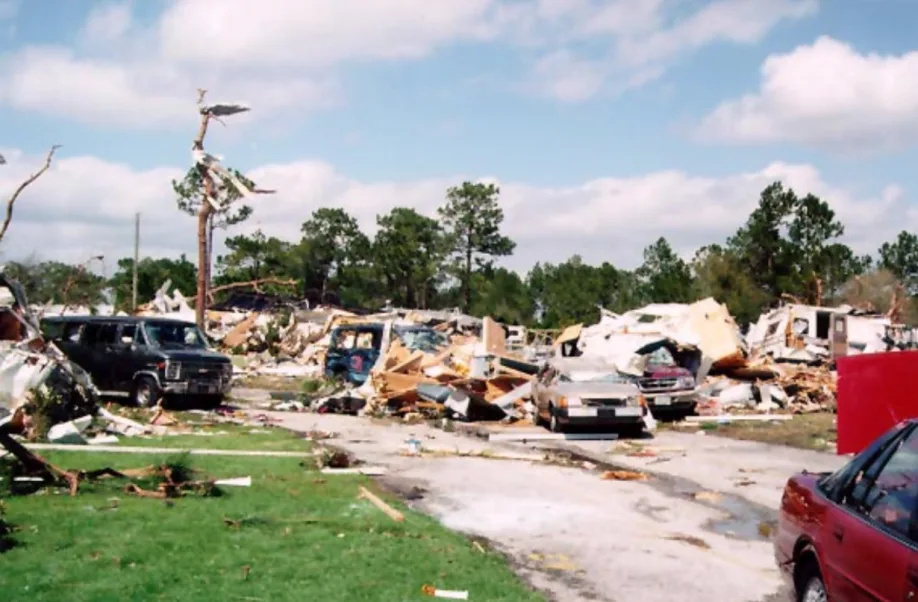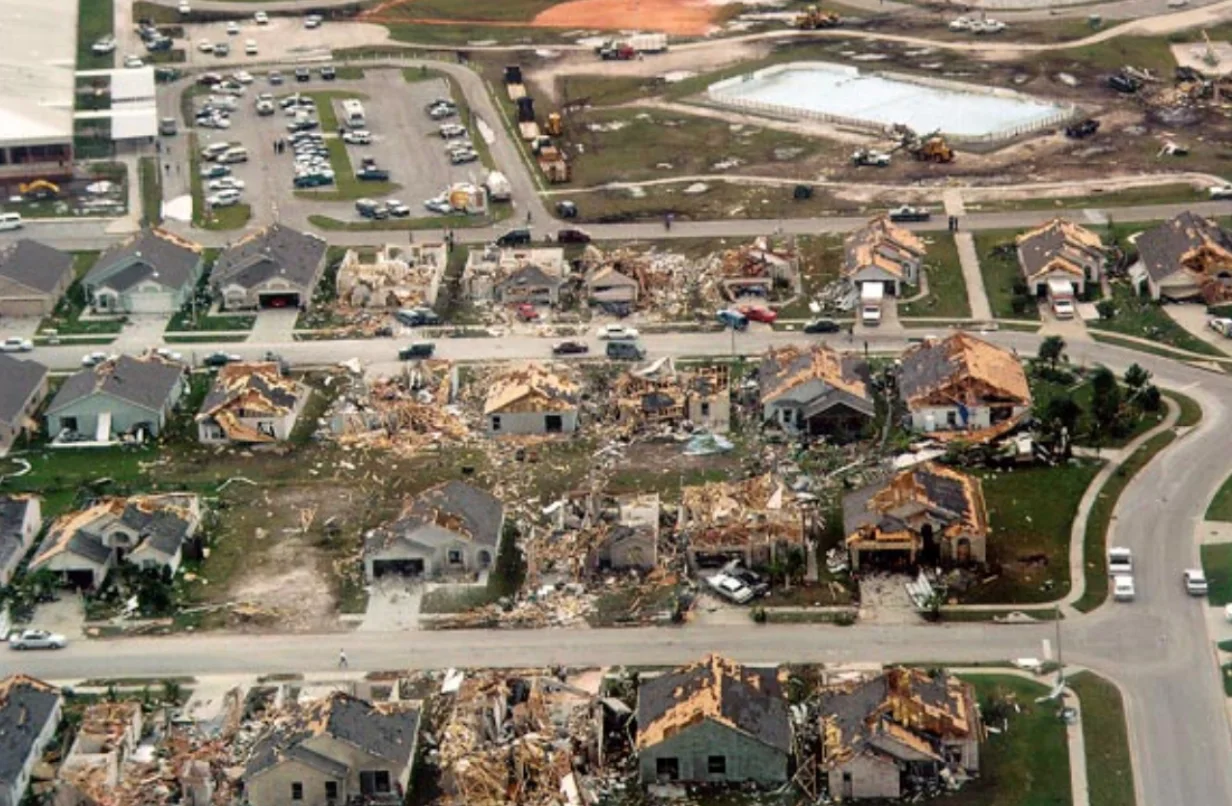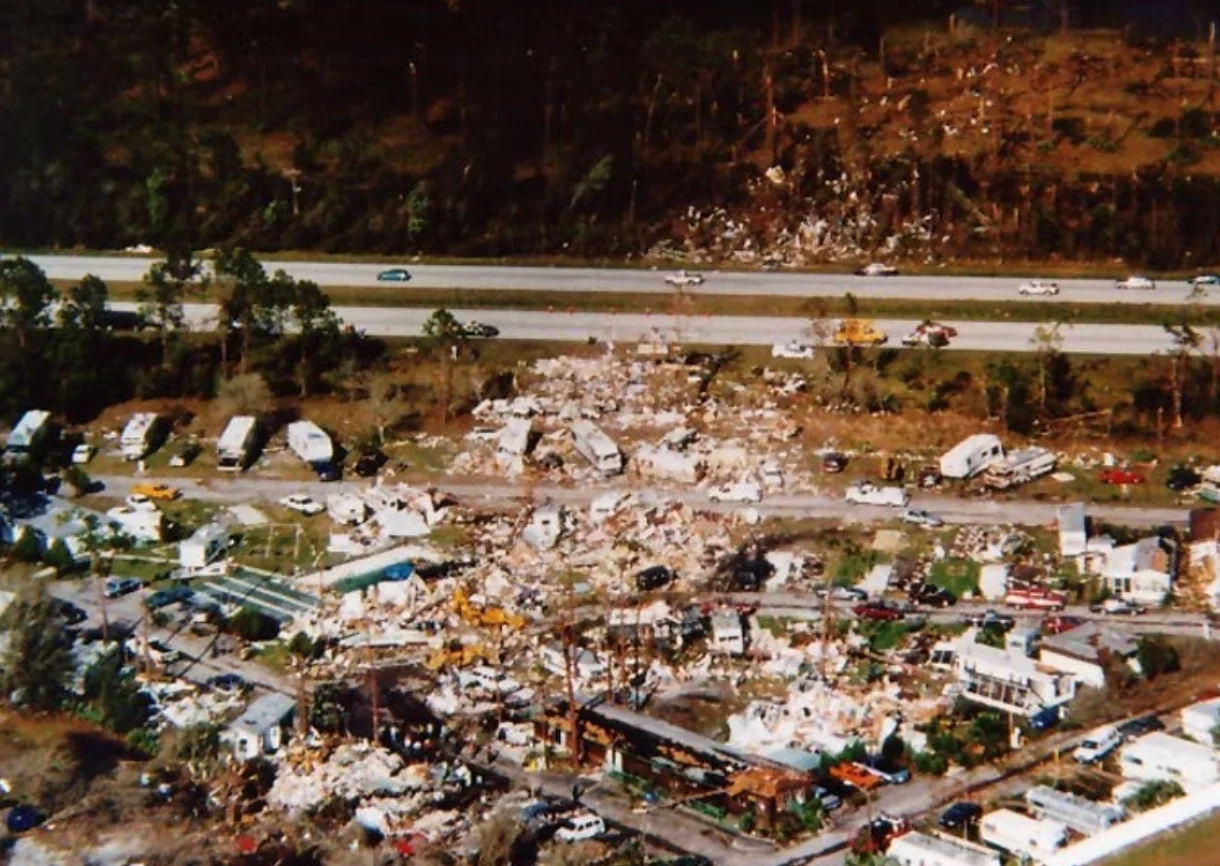
Florida's deadliest tornado outbreak led to a thorough policy investigation
The tornadoes caused 42 deaths and 260 serious injuries.
This Day In Weather History is a daily podcast by Chris Mei from The Weather Network, featuring stories about people, communities and events and how weather impacted them.
--
Between Sunday, Feb. 22, 1998 and Monday the 23rd, Florida was hit with 12 tornadoes. This is Florida's deadliest tornado outbreak with a total of 42 deaths and 260 injuries. This broke the previous record of 17 deaths from a storm that killed 17 people on March 31, 1962.
These events are also known collectively as the 1998 Kissimmee tornado outbreak and The Night of the Tornadoes.

Aerial view of damage in Lakeside subdivision in Kissimmee, Florida. Courtesy of Robert Sheets
Because of the devastating loss of life, the National Weather Service (NWS) decided to conduct a Service Assessment to better understand what went wrong. The assessment findings are published in a 37-page document.
It all started on Feb. 22, when radar detected long-lived supercell thunderstorms over the eastern Gulf of Mexico.
The tornado outbreaks started in the Tampa Bay Area and swept through Central Florida.

Video capture of the Winter Garden tornado. Courtesy of NWS Melbourne.
The tornadoes were strong because there was an especially strong jet stream with warm and humid air out ahead of a cold front. This is common during an El Niño phase in Florida's dry season. The stronger jet streams greatly increase the odds that strong tornadoes could develop.
In total, on the Fujita Scale, this outbreak included four F0, three F1, two F2, and three F3 tornadoes.
The NWS conducted a Service Assessment to better understand the performance of its offices in terms of providing timely warnings, accurate forecasts and other services to ensure the safety of the public.

Aerial shot of the Ponderosa RV Park in Kissimmee, Florida. Courtesy of NOAA Service Assessment.
The Assessment includes more than 15 findings and recommendations, including these three.
The Storm Prediction Center (SPC) needs to better understand how long a person in charge of tornado watching should be active in that position. During this outbreak, an employee was on their 13th consecutive hour.
The NWS should work with officials on a Federal, state, county, and city-level to create policies that promote recommended tornado refuge areas in vulnerable areas like recreational vehicle and mobile home parks.
Because Florida has a large number of visitors and seasonal residents, the NWS should work with state, county and city officials, as well as the private sector to create emergency documentation that is provided to tourists upon arrival.
To learn more about Florida's deadliest tornado outbreak, listen to today's episode of "This Day In Weather History."
Subscribe to 'This Day in Weather History': Apple Podcasts | Amazon Alexa | Google Assistant | Spotify | Google Podcasts | iHeartRadio | Overcast'
Thumbnail image: Almost complete devastation in a narrow corridor through Ponderosa RV Park in Kissimmee, Florida. Multiple deaths occurred at this location. Courtesy of Robert Sheets via NOAA










